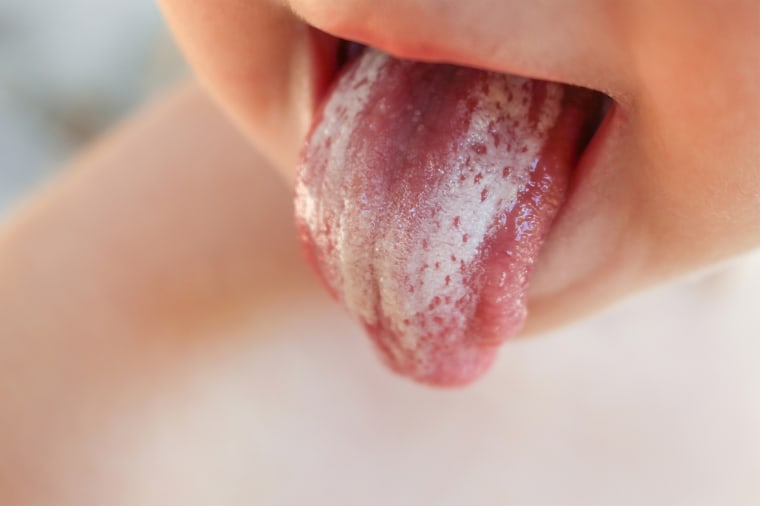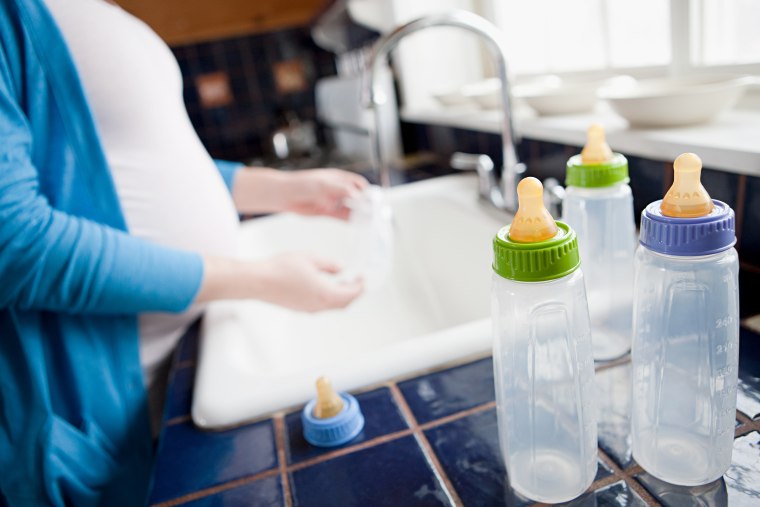Thrush, or oral candidiasis, is a common medical condition in babies, typically appearing as white spots in and around the mouth and tongue.
According to Orlando pediatrician Dr. Candice Jones, it's a fairly harmless infection, typically caused by yeast or a fungus called Candida albicans.
"We all have Candida on our skin ... Flora in the mouth is a normal part of our bodies," she explained. "But sometimes that can overgrow, and babies have not fully developed their immune systems. So that's what sets them up for these type of infections."
Jones said that a baby's mouth provides the perfect environment for fungus to thrive.

"The environment in the mouth can promote that overgrowth, because they're getting breast milk or formula which is highly nutritious but sweet," she said. "It's a warm, moist, liquidy sweet environment."
Can thrush be avoided?
Despite the ease with which thrush can begin, Jones said there are some things that parents can do to avoid the condition.
One of the most important things parents can do is sterilize any surfaces that would enter a baby's mouth.
"Make sure to sterilize, properly, all of the baby's nipples, bottles, pacifiers," Jones said. "Whether you're microwaving them, boiling them, or just running them through the dishwasher, just make sure you're cleaning and sterilizing on a regular basis."
If you can, Jones recommends replacing things like nipples and pacifiers on a regular basis.

"That cuts down on the yeast colonies or the amount of yeast that are in those plastics," she said.
Moms who are breastfeeding also need to take precautions.
"If the mom has red, sore, painful or cracked nipples, there's likely to be yeast," Jones said. "Oftentimes, when a mom is breastfeeding and I see thrush in the baby's mouth, I say I need to check your nipples... If there's a yeast infection there, it's likely to also be in the baby's mouth."
In less common cases, babies can also develop thrush in the diaper area or on the backs of their necks, said Jones, since both areas are the "warm, moist, wet environments" where bacteria thrives, especially if a baby happens to spill milk or drool.
What are the symptoms of thrush?
The most common symptom of thrush is easily visible: A white, "cottage cheese-like" substance around the tongue and mouth that cannot be wiped away.
Jones said that while it doesn't typically cause babies pain, it can sometimes make them uncomfortable if it has progressed to a stage where it makes feeding difficult.
"Most of the time, it doesn't seem to hurt or they don't seem irritated," Jones said. "They continue to feed and they're happy, but some parents might say that they feel like the baby isn't feeding as well, or they're a little fussy. And there might be concerns that the baby's mouth may be uncomfortable."

When thrush has gone on for a long time with no treatment, Jones said that the "whole mouth is coated" in that white substance. It might also appear on the lips or corners of the mouth.
Jones said that parents seeing more severe symptoms are likely seeing a more extreme infection.
"If the baby has a fever, isn't feeding well, is refusing to feed, I wouldn't just blame that on thrush," she said. "I would definitely see your doctor to have the baby evaluated to make sure there is nothing else going on.
How can thrush be treated?
Jones said that "boundary cases" or milder cases of thrush might go away on their own, but typically a medication is needed to treat the infection.
"Good oral care can help with thrush, but if it goes on and it continues to spread, you definitely need to see your doctor or pediatrician and what we us are anti-fungal solutions," Jones explained.
Typically, those medications are applied with a dropper or applied to the gums and mouth with a sponge applicator. Used several times a day, the medications will slowly get rid of the infection over the course of a few weeks.